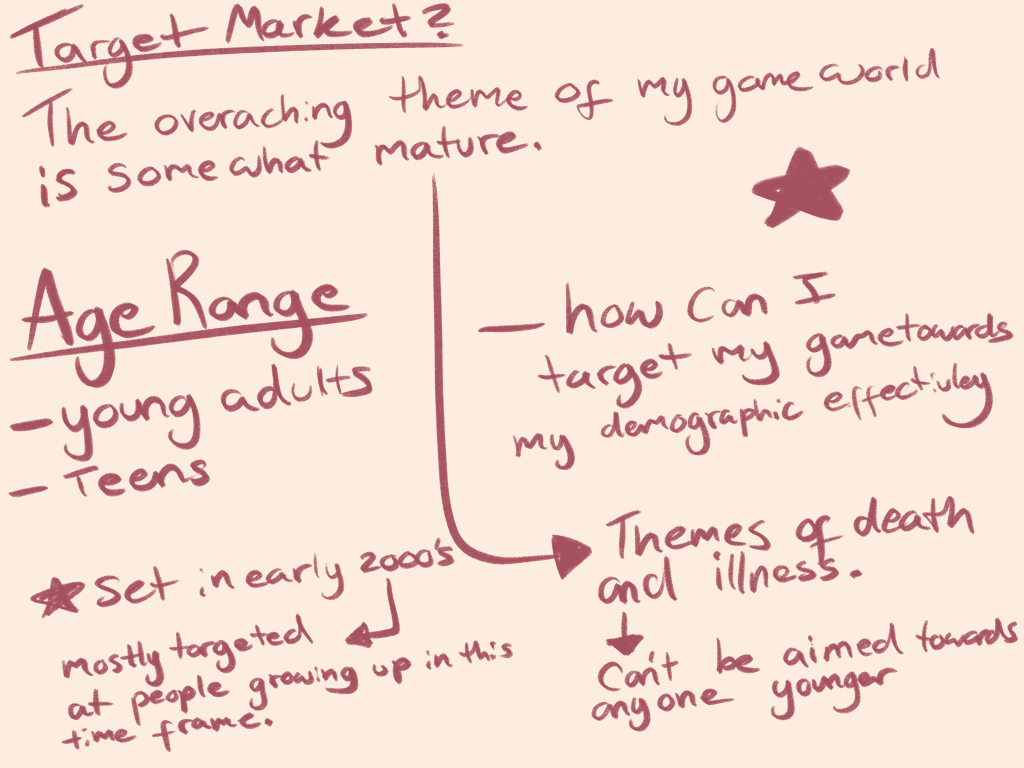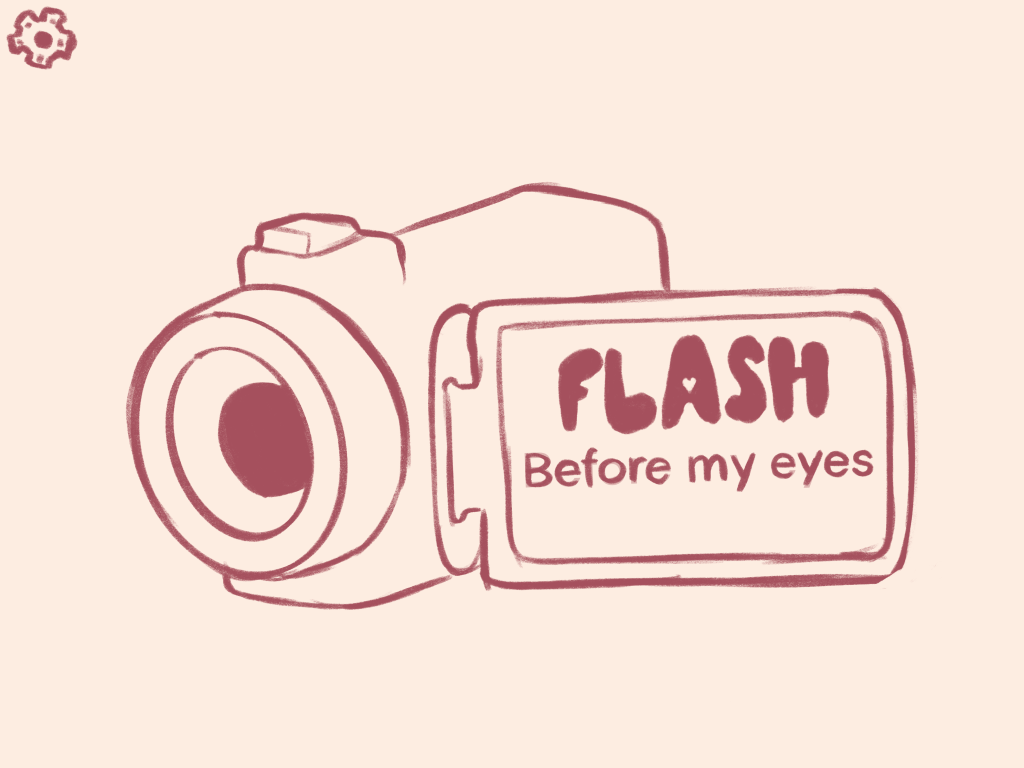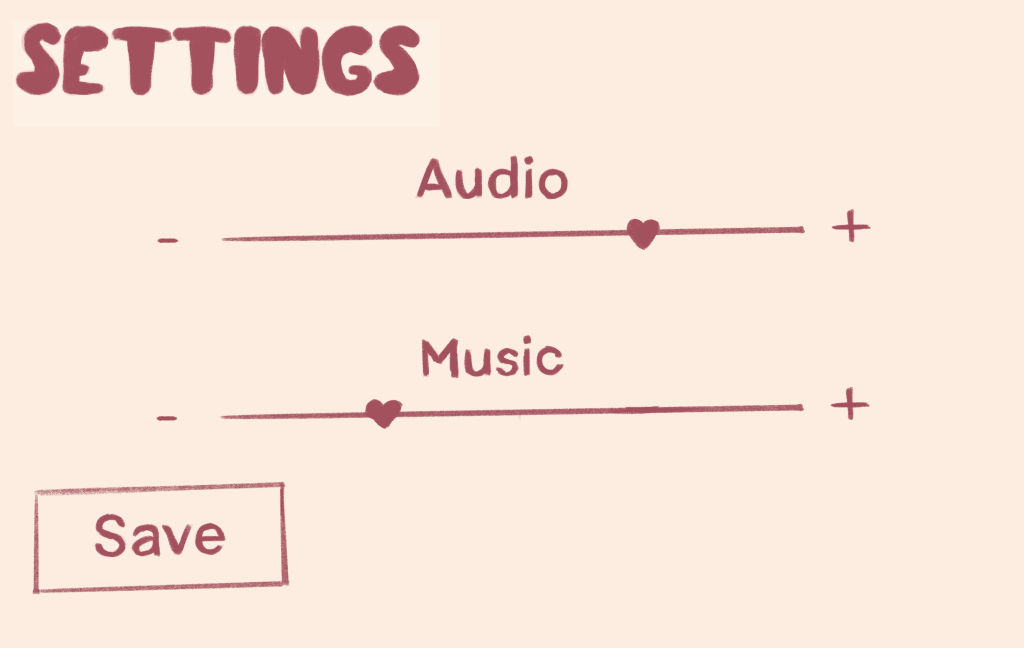The players experience is arguably the entire out come for a game, and since so many different areas impact the users experience i should consider, explore how i can make my game more user friendly. First i have to establish my target market and then take that into consideration when planning it out; since my target market should define every aspect of my game.
- Target Market

Since my game is going to be including some more mature overarching themes i have to consider the fact that my target market will have to be teens and above. Since my one of my main goals for this Gameworld is to elicit a sense of nostalgia towards my players i feel as though young adults would be the best age demographic for this project.
The majority of the game is going to be set sometime within the early 2000’s, not only do young adults appeal towards and fit in more with the more mature concepts of the game but they are also within the same generation as the player character. This demographic will be able to implement and immersive themselves into the Gameworld more easily as it should be familiar to them.
I want my game to be accessible to as many people as possible. Simple things such as having a lower price on the game or a free demo are great ways to achieve this in a more simple financial sense. But i also have to consider what platforms the game could be available on. Ideally a game could be available anywhere, on any operating system and any device. Unfortunately i do not feel as though my game concept would translate well into something mobile, but if produced i would intend to have it optimised and available on most consoles.
My target market:
- young adults – adults
- casual players
- console and pc
- User Interface

Considering the user interface is often one of the first things your player will come across it must be considered visually and effectively. Here I have created a rendition of what the loading and menu screen may look like for this game. I wanted to keep the style consistent with that of the environment and characters so i opted for a more simplistic and childlike look to it.
The loading screen itself is simply an image of the games logo with a settings dial in the corner. Knowing this game is also aimed towards more casual type players i attempted to keep the UI as simple as possible. This works in two ways; it is consistent with the style of the game and can be easily navigated to avoid overwhelming or confusing the players. Trying to keep with the childlike and simplistic style for the interface. Considering that the majority of my game is set in the early two thousands i wanted the loading screen to depict something nostalgic from this time. Having a home video camera as the main imagery for the game works well because it plays into the nostalgic theme and is widely recognisable.

- Audio
The audio for the user interface can make or break the entire aesthetic, i want it to fit with the simplistic visuals. The buttons will make a bleep noise when clicked, but this noise will resemble that of a 2000’s button beep. It will be a little static and be almost comical, but this works perfectly within my Gameworld.
Throughout the rest of the game there will be music, it will be quiet and subtle as to not be overstimulating but also help aid the environmental ‘vibe’. It will be simplistic and electronic and chance in pace dependant on what is going on with the narrative and the environment.
- mechanics
The mechanics for this game will be relatively simple and hopefully very intuitive for the player. it will be a simple point and click game with minimal movement around an area. This is because i have chosen a two dimensional art style for this game so it can roughly resemble that of a children’s picture book, these simple base mechanics paired with the art style should work together perfectly.
For the puzzle sections within the game there will be two main different types of puzzles. One where you have to interact and say the correct dialogue towards a character to unlock the information you need such as a code. The other will be two dimensional picture puzzles, such as solving jigsaws, finding missing pages in a book or playing with a deck of cards. Each puzzle will be associated with something nostalgic from peoples childhood during this era.